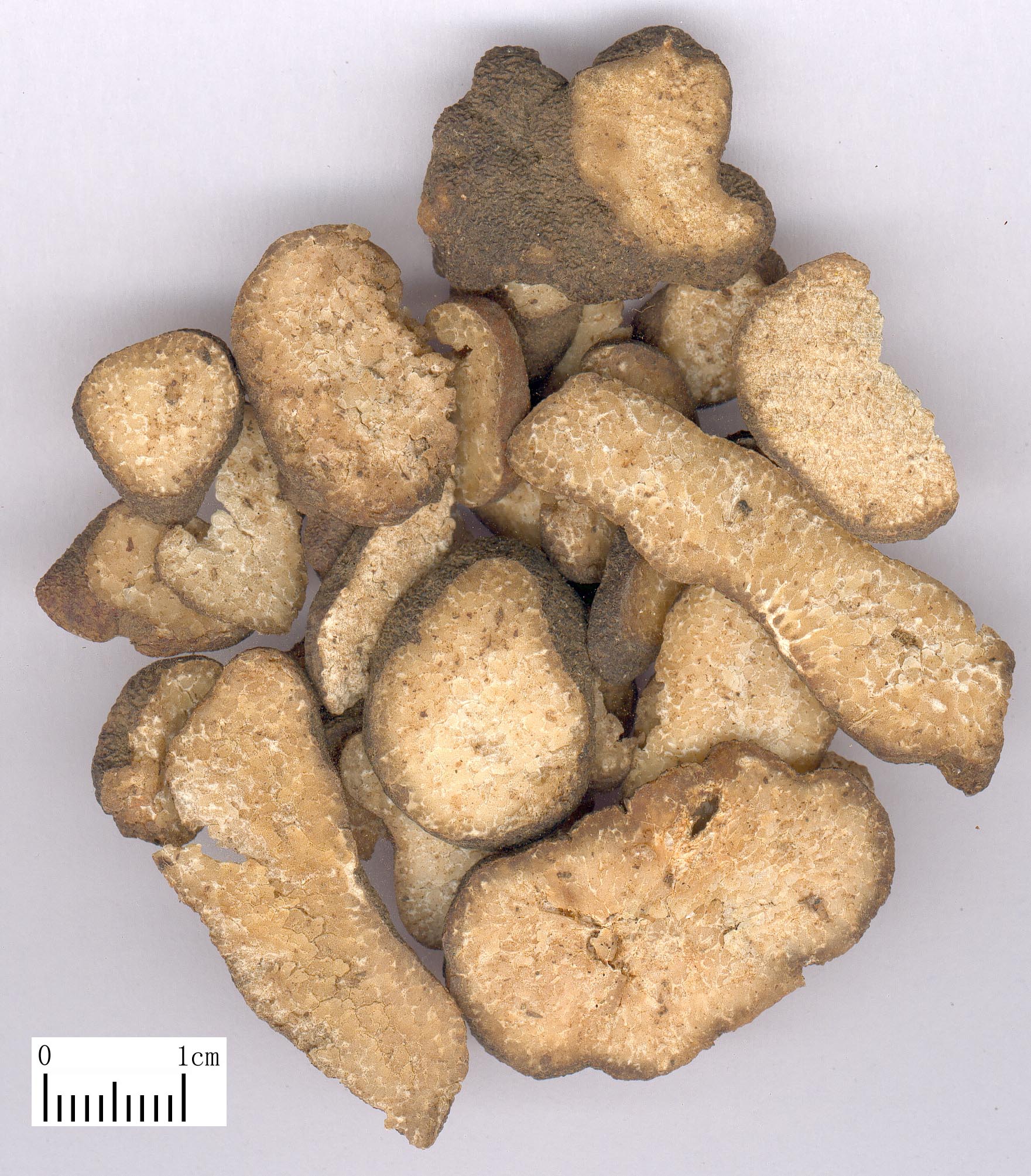Omphalia
Naming
Lei Wan (Omphalia)——Shen Nong Ben Cao Jing (Shen Nong’s Herbal)
Origin
The dry sclerotium of Omphalia lapidescens Schroet. of family Polyporaceae.
Location
Sichuan, Guizhou and Yunnan provinces in China.
Harvest
Collected in autumn.
The actual smell and taste
Slightly bitter without unpleasant smell.
Best quality
Large, full, firm, heavy, purplish brown exterior and white interior without sand.
Processing
Washed and dried in the sun; unprocessed.
Property
Slightly bitter, cold, mildly toxic; stomach and large intestine meridians entered.
Actions
Expel parasites.
Indications
Various intestinal parasitic diseases
It can expel various intestinal parasites such as taeniasis, ancylostomiasis, ascariaisis and so on, especially taeniasis. It is ground into powder and swallowed for treating taeniasis, 20g once and 3 times daily. Tapeworm bodies are completely or partially expelled in most cases in 2~3 days. For ancylostomiasis and ascariasis, it is reinforced by parasites-expelling herbs. For instance it is combined with Bing Lang, Qian Niu Zi and Ku Lian Pi in Zhui Chong Wan from Zheng Zhi Zhun Sheng. For enterobiasis, it is also combined with other parasites-expelling herbs and purgatives such as Qian Niu Zi and Da Huang.
Dosage and Administrations
Take 15~21g in pills or powder, 5~7 g once. Take with warm water after meal, 3 times daily for consecutive 3 days.
Cautions
Do not decoct this herb because it contains protease that will be easily broken at 60℃. Take with cautions if the patients suffer deficiency-cold of spleen and stomach with helminthic accumulation.


